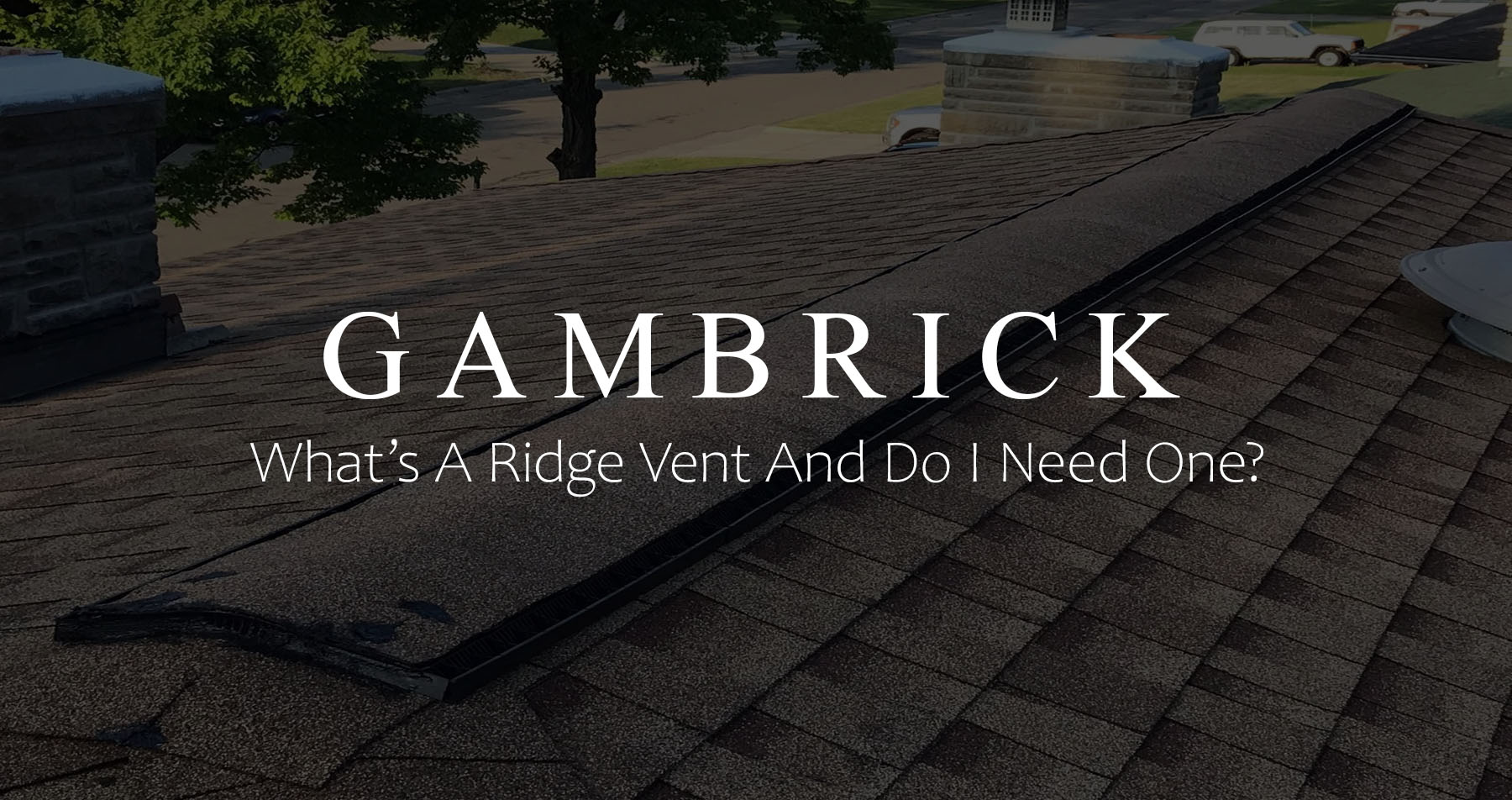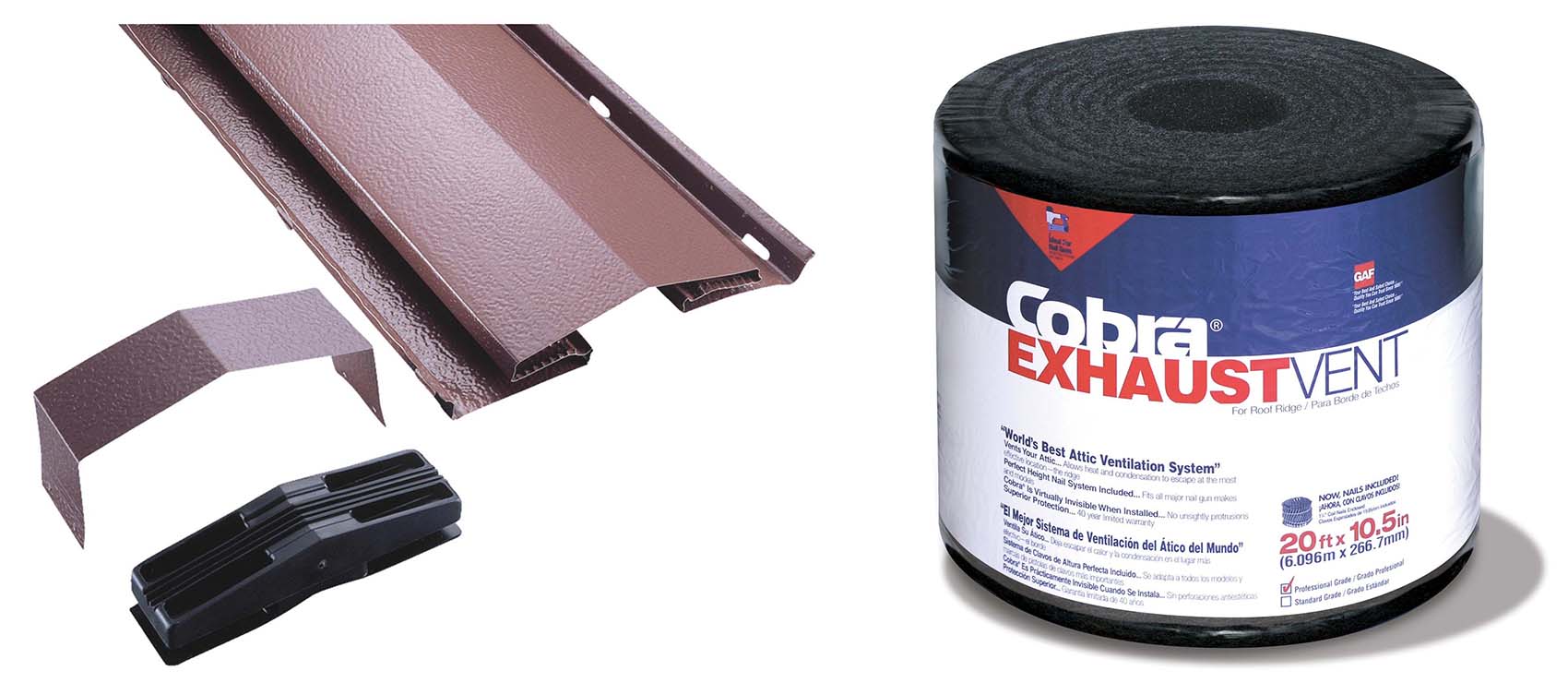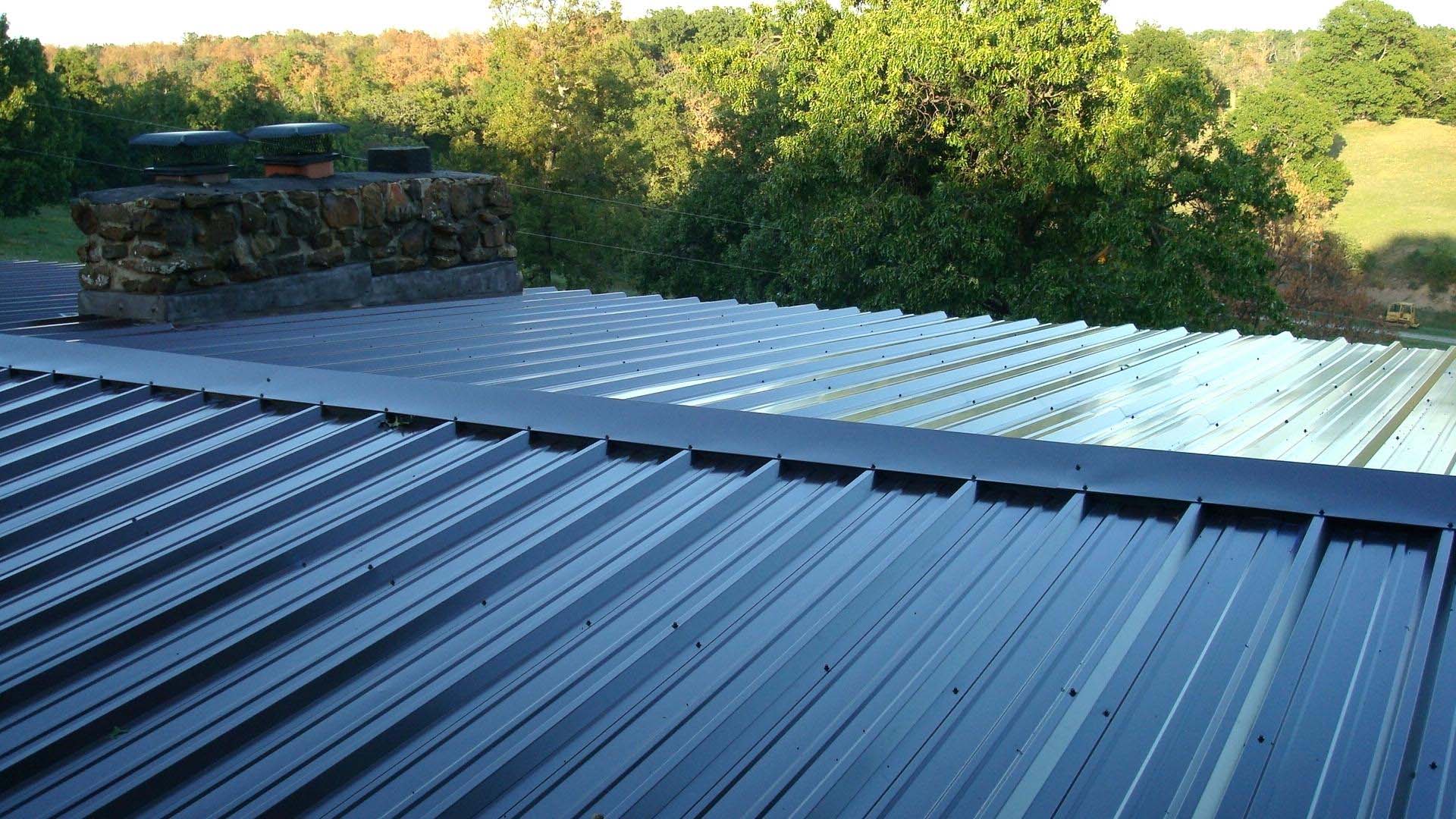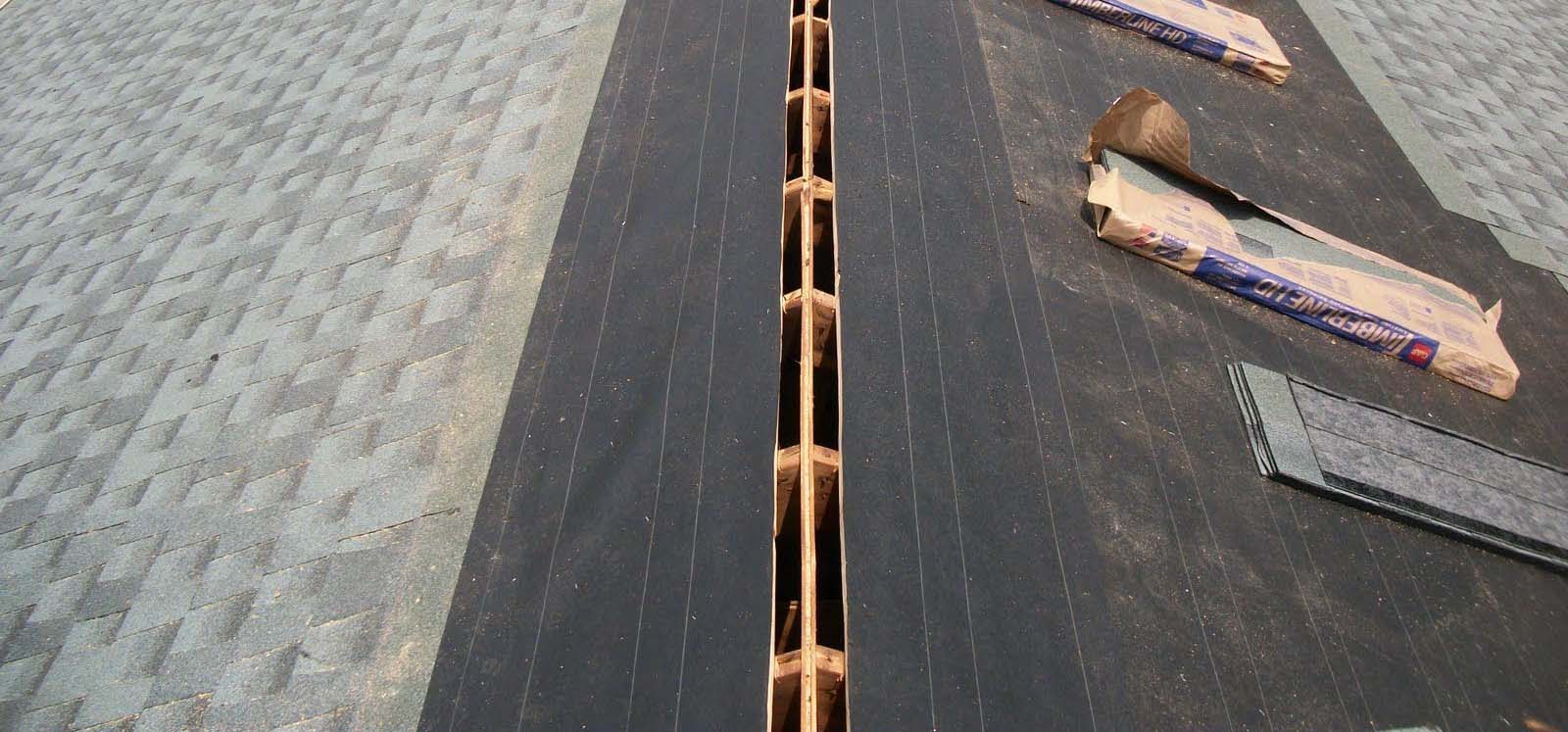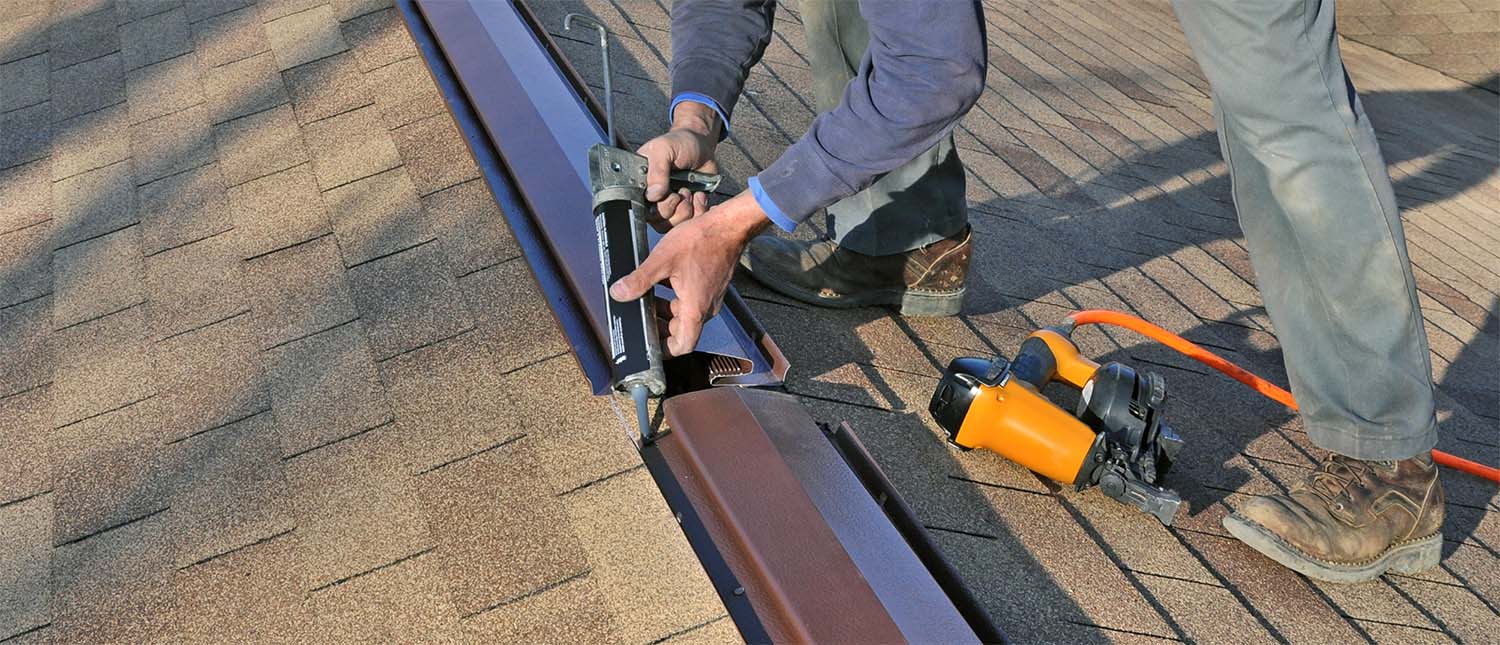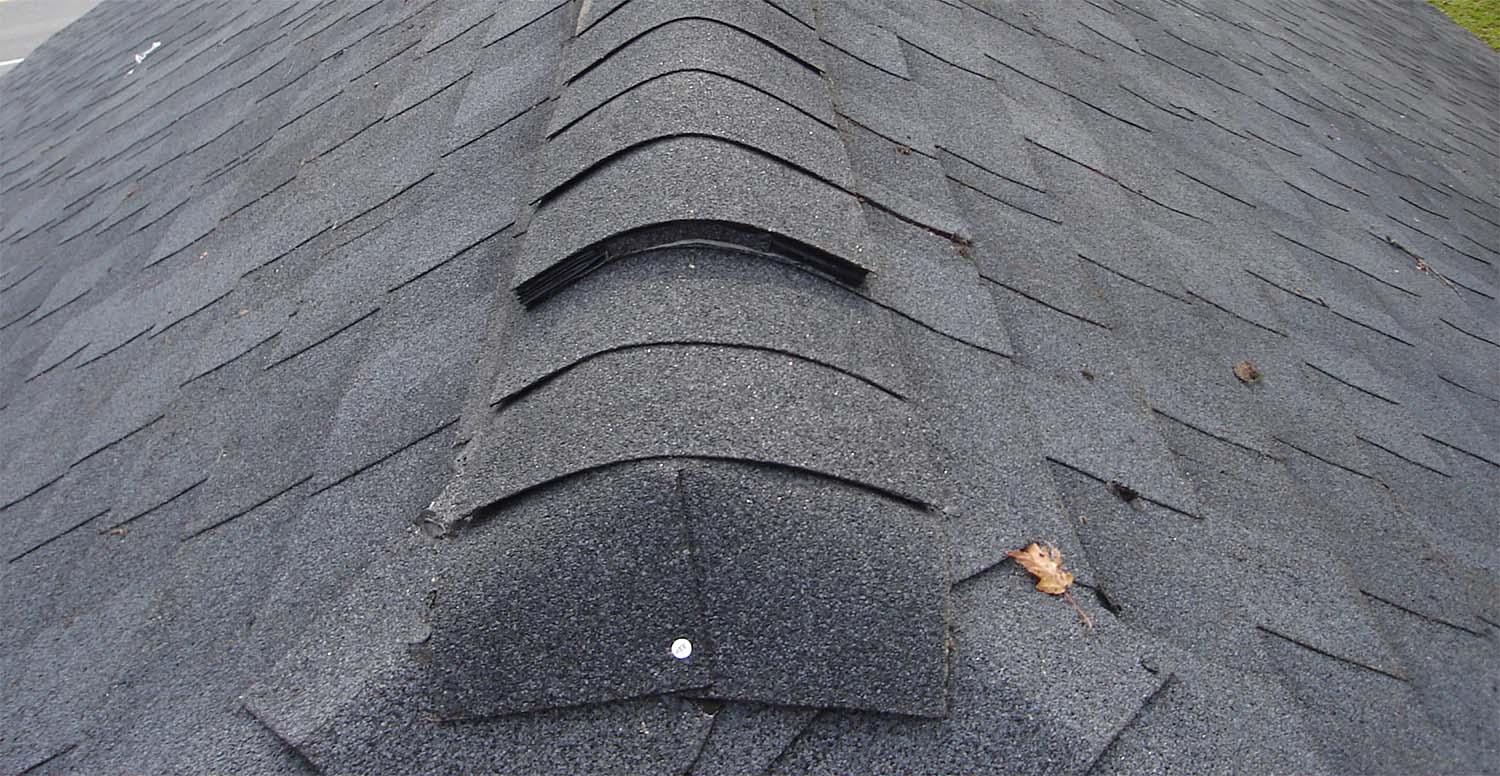What’s A Ridge Vent And Do I Need One?
Whats a ridge vent and do I need one are both very common question we get asked whenever we remodel an older home or replace a roof. Ridge vents are a great way of venting hot air out of the attic. They run along the top of the roof which is commonly called a ridge. Hot air rises, so putting a vent along the highest point of the roof makes the most sense. If you have soffit or other attic vents then as cool outside air comes into the attic it forces out the older, hot air through the ridge vent. They’re not the only type of attic vent that works but they’re one of the best. Do you need a ridge vent? No. You could vent the attic in other ways. But they’re the method we recommend and use on all of our roofs.
In many areas of the country ridge vents are code. So if your replacing your roof or building a new home they’re required. Check with your building department to find out if you need one. But even if you don’t you should install one anyway. Improper ventilation and super heated attics can cause all sorts of problems that we’ll discuss throughout the article ahead.
Whats a Ridge Vent? Aluminum ridge vent next to a Cobra shingle over ridge vent
Different Types Of Ridge Vents
Whats a ridge vent? A ridge vent is a humidity and heat transfer vent installed on residential roofs, especially in hot and humid climates. They help circulate the air by giving hot air a place to go. Ridge vents run the entire length of a roof and generally include soffit vents that let cooler air in. Venting an attic properly is all about circulation. If you want to push out hot air then you have to take in some that’s cooler. Taking in air requires other vents because ridge vents are only for expelling the hot air. So for ridge vents to work their best they should be installed with other vents that act as an intake. These are best located inside the soffits.
Ridge vents are a very affordable attic venting solution that can reduce cooling costs by expelling hot air. Modern venting systems are unnoticeable and blend into the roof completely. They even get a nice, decorative cap that totally hides the vent. Most roofing manufacturer sells a cap that covers the ridge vent for a nice, finished look.
Keep in mind that a ridge vent is only one part of a system of vents that ventilates the attic. For a ridge vent to work properly, it relies on passive airflow or intake coming into the attic space via soffit or gable vents or other attic ventilation. Without air coming in to push out the hot air the ridge vents don’t do that much.
There are two main types of ridge vents:
Shingle Over Ridge Vents
A shingle over vent is a ridge vent that gets installed over the ridge of a roof and is later covered by an asphalt shingle cap. Once completed all you’ll see is the sap. The ridge vent is completely hidden under the cap shingles.
Aluminum Ridge Vent
An aluminum ridge vent has a mushroom shape combined with a wide flange on both sides that sits on top of the roof shingle. The aluminum vent is the finished product and doesn’t get hidden under a shingle cap. If you go with an aluminum cap you better make sure you like how it looks because there’s no way to hide it.
Whats a ridge vent? Aluminum ridge vent on a metal roof
Ridge Vents For Metal Roofs
One of the most important components of a residential roof is the ventilation system. Proper ventilation is the key to lowering home energy costs, preventing attic mold, and increasing the comfort of living in your home.
A ridge vent on a metal roof works just the same as one for a shingled roof. The only difference is the material. Ridge vents for metal roofs are made from aluminum and double as both the ridge vent and ridge cap. They’re completely finished and meant to be seen as the decorative cap of the roof.
Check out the pic above of this metal ridge vent on a metal roof.
Space cut out of the roof sheathing ready for ridge vent installation
How Do Ridge Vents Work
A ridge vent actually covers a hole running the entire length of the roof. Roof sheathing is cut back about 4″ on either side of the roof which is then covered by the vent. Check out the pic shown above. That space will get covered in either one of two ways.
- A ridge vent is installed over the void which is then covered by a shingle cap. The cap matches the other shingles perfectly and completely covers the vent. This style ridge vent is meant to be hidden.
- An aluminum ridge vent is installed which covers the void. No cap is installed over an aluminum vent. This stye ridge vent is a finished product that is meant to be seen all the time.
Continuous ridge vents are more effective than other types of attic vents because they’re installed at the peak of a roof’s ridge which is where the hottest air is. This allows warm air to escape from the attic and helps draw in cooler air from other vents.
You only need one main ridge vent on the highest ridge to get the job done for ventilation as opposed to multiple box or gable vents that honestly don’t work as good. They’re more expensive vs. box vents and non mechanical so you don’t have to worry about any electrical systems.
Ridge vents work best when used on a shingled roof.
Whats a ridge vent? It covers this gap in the roof. A roof ready for shingles and a continuous shingle over ridge vent
Is A Ridge Vent Enough Ventilation?
Roofing manufacturer warranties generally require a minimum of one square foot of ventilation for every 150sf of attic space but only one square foot of ventilation for every 300sf when the ridge vent system is used. That should tell you how efficient a good ridge vent is at expelling heat.
There are quite a few good ridge vents on the market but the continuous vent, as opposed to the individual roof vent, is the most effective. Continuous ridge vents allow hot air to easily escape from the roof peak which controls the climate inside the attic.
A ridge vent along with other vents that draw in colder air is enough ventilation. However, a ridge vent alone without some intake vents wouldn’t do as much. We highly recommend installing soffit or gable vents along with a ridge vent or some other form of air intake. It’s really a combination of intake and exhaust that properly vents the attic. One without the other won’t work as well because hot air has to be pushed out of the vent by incoming colder air. It’s all about the air pressure. Without an intake there just isn’t enough pressure to get the hot air out.
Is A Ridge Vent Necessary?
Some form of attic ventilation is necessary. It doesn’t have to be from a ridge vent. You could use a box vent, gable vent or some other type of roof vent system. There are a bunch of products on the market. However, ridge vents are the best.
So you ask, is a ridge vent necessary? No, but some sort of attic vent is and ridge vents are the best. They’re also cheap and easy to install so why wouldn’t you want one. If you have a shingled roof they’re hidden so you won’t even know it’s there.
Ridge vents do, however, need intake to work properly. Mechanical roofing systems can intake and exhaust all by themselves. Although with mechanical venting systems you need electrical power for them to work and they’re a lot more expensive. Ridge vents work for free once installed without requiring any power. All they need are some simple gable or soffit vents to bring fresh air in.
Is a Ridge Vent Enough?
Yes. A continuous ridge vent running the entire ridge of your attic is enough to properly vent the attic 99% of the time. However you should contact the manufacture to be 100% sure. They can run a few calculations to make sure the vent exhausts enough hot air.
Keep in mind that to work properly a ridge vent needs fresh air intake. Incoming air pressure causes hot are to vent out the ridge vent. Without this pressure from the fresh air they won’t work as well. These vents are no big deal. A simple gable or some soffit vents will do the trick and chances are you have them already.
Ridge vents can be added to any old home and work best on shingle roofs. We install them standard on every new home we build and they’re the only type of attic ventilation we use. In combination with soffit and gable vents of course.
With a complete system like this a ridge vent should be more than enough. And best of all they’re cheap and very easy to install.
Whats a ridge vent? Metal ridge vent being installed
Is a Ridge Vent Worth It?
Yes. Ridge vents do a great job at expelling heat from the attic when used in combination with a few intake vents. They’re definitely worth it in terms of helping to keep cooling costs down in summer. Preventing ice damns. Keeping moisture and humidity out of the attic. And helping to preserve your roof shingle warranty.
Many people don’t know a super heated attic can cause damage to your roof shingles which generally doesn’t fall under the warranty. It can also greatly reduce the life of your shingles. It’s such an easy thing to prevent that it just doesn’t make any sense not to do it. Buying and installing a ridge vent is such a cheap and easy job to do that it’s definitely considered a worth while investment.
Are Ridge Vents Better Than Turbines?
Ridge vents are much better than turbines and other forms of attic venting provided they have enough continuous fresh air intake through other vents. The best way to intake fresh air is through the soffits. Soffit vents draw fresh, cool air in which is then expelled through the ridge. It’s a fantastic system that works better than anything else we’ve tested. And it’s cheap, easy to install and doesn’t require any power.
Are Ridge vents Required By Code?
Ridge vents are required by code in some areas. Here in NJ we install them along with soffit vents on every home we build. Check with your local building department to find out if they’re required where you live.
Required or not though, they’re still a great venting system to install. If you do, make sure you also install intake vents. With the soffit vents drawing in fresh air the ridge vent doesn’t work as well.
Does A Ridge Vent Work?
Yes. Ridge vents in combination with other vents that intake fresh air work great. They do need the other vents though. A ridge vent alone doesn’t work that great. You really need that fresh cool air coming in to push out the existing hot air. Even in summer the new air will still be a lot cooler than what’s already in the attic. Hot sun beating down on the roof heats the attic air quite a bit.
The cooler new air creates pressure that pushes hot air and moisture out through the ridge vent.
This process works continuously which is why ridge vents work so well. The only times the vents don’t work is when they’re covered by large amounts of snow. But the snow on the ridge clears away the fastest so even in really cold climates ridge vents work great.
Whats a ridge vent? Continuous ridge vent installed with shingle cap
What If Snow Blocks The Ridge Vent?
In winter, ridge vents can be blocked by snow which prevents them from working correctly. Air can’t flow through the vents after all if they’re covered by snow.
An attic ventilation system is designed to keep things cool in the summer time but it also has to maintain temperature in cold months too. Ridge vents do stop working when snow builds up but because they’re at the highest point of the roof they’re generally not blocked for very long. Winds and sun shine usually clear the ridge within a few days even after a heavy snow storm and warmer air working its way up through the attic helps melt snow covering the vent.
Of course in really cold climates with bad snow fall vents could stay blocked for a while. But generally not long enough to do any damage to the home or attic. Under certain conditions, a layer of ice can build up under the snow which covers and blocks the ridge vents. But overall they remain functional enough of the time to do their job.
When ridge vents get covered ice damns can form and moisture can start to build up. There’s really nothing you can about it except wait for the vent to clear up and start working again. Once it does the damns will melt and moisture will be expelled.
How Ridge Vents Work In Winter
The purpose of installing a ridge vent varies depending on climate. In a cold climate, the primary purpose of attic ventilation is to maintain a cold roof temperature. This helps prevent ice dams from forming and vents any moisture that moves from the heated living space into the attic. We’ll get into why it’s so bad to have moisture in the attic later on.
The ridge vent works and is installed in exactly the same way no matter what the climate is like. The only thing that changes is the primary purpose of the vent. preventing ice damns may not seem like a big problem if you have mild winters but in Minnesota it’s a definite issue.
How Do Ridge Vents Work In Summer
In a hot climate, the primary purpose of a ridge vent is to expel hot air from the attic to reduce the building’s cooling costs and relieve the strain on air conditioning systems.The hot summer sun beating down on your roof can super heat the attic air. Many times mechanical equipment is located in this super heated attic. Cooling a house in summer is expensive and having a super heated attic makes it even worse.
Moisture also tends to build up more in hot months. Both from the hot humid air and mechanical equipment sweating. Expelling this humidity is one of the most important jobs performed by the ridge vent.
In mixed climate areas, attic ventilation with a ridge vent serves both roles, depending on the season.
Conclusion
Whats a ridge vent? If you’re thinking about adding a ridge vent to your home than you should. They’re cheap and fairly easy to install and do a fantastic job at ventilating the attic. Provided of course that you have soffit vents or some other form of intake to bring in fresh air. There’s no need for expensive mechanical equipment or ugly roof venting systems when you can just install a ridge vent.
We hope a few of the pics we’ve shown and the information provided will help you improve your home in some way. Check back, we update these pages with new pics all the time as we get them. If you’ve got any pics you’d like us to showcase send them over.
If you have any questions or comments feel free to e-mail us any time. We’d love to hear from you.
